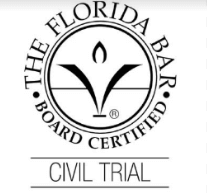Table of Contents
The client, a 46-year-old woman, was visiting a commercial office building in Boca Raton. She was fundraising for a local hospital and visiting an office on the second floor. She had gone up one set of stairs, which was an external staircase. As she was leaving, she was going down a different external staircase. The treads and risers of the staircase had different dimensions and were not uniform, which caused her to fall and suffer a severe ankle fracture. The faulty stairs became the central pillar of a personal injury case.
Contacting an Attorney Following the Accident

After breaking her ankle, the client was taken to the hospital and there was an issue as to who was going to pay her medical bills. That is when she made the decision to call an attorney. Because the accident occurred while she was on job, it became a workers’ compensation claim. Although Kogan & DiSalvo did not pursue the workers’ compensation claim, the firm identified that there was a corresponding, third-party premises liability claim against the office building, because the negligence in the design of the stairs caused this woman to fall.
This particular client found Kogan & DiSalvo because she was referred by another attorney who was familiar with the type of work that the firm does. The client had reached out to this lawyer who handles another area of law and they suggested that she reach out to Kogan & DiSalvo for help.
Preparing for Trial
To prepare for trial, an attorney met with the client multiple times and told her exactly the questions that he was going to ask at trial. The lawyer also let the client know that the defense would ask questions based on her deposition. Discussing expected cross-examination questions gave some comfort to the client because she knew that there would not be anything thrown at her while she was on the stand that she was not prepared for.
Courtroom Procedures
The first stage of any case is the picking of the jury. The second stage after the jury is selected is the opening statement, in which each attorney gives the jury a roadmap as to what evidence the attorneys expect matter in the trial. Following the opening statements, attorneys begin presenting evidence. The evidence consists of witness testimony and the introduction of relevant documents into evidence. After the plaintiff rests their case, the defense typically moves for a directed verdict, alleging that the plaintiff has not made a prima facie case and the claims should not be submitted to the jury. In this particular case, the defendant made that motion and it was denied by the court, which is typical. The defendant then proceeds with their case in which they put on their witnesses and their evidence. After the defense rests, the jury gets the jury instructions from the judge and the attorneys make their closing arguments. Then the case is submitted to the jury.








